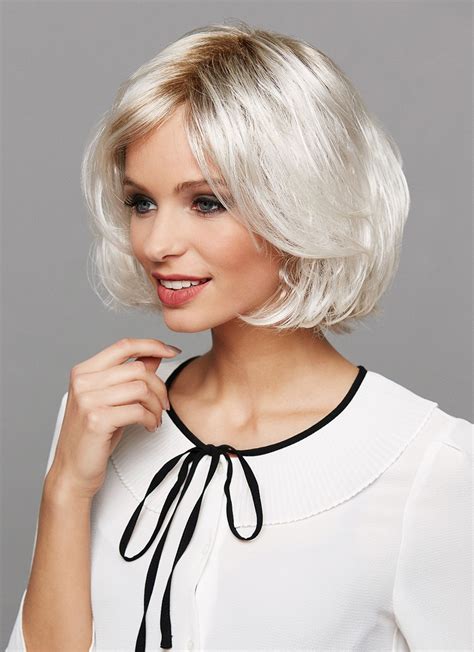Introduction

Wigs have become an integral part of fashion and beauty for women of all ethnicities, including white women. Whether you’re seeking a temporary style transformation, concealing hair loss, or simply enhancing your everyday look, a wig can empower you with limitless options. This comprehensive guide will delve into the world of wigs specifically designed for white women, empowering you with expert knowledge to make informed decisions.
Understanding Wig Types
Human Hair Wigs:
- Crafted from real human hair, offering unmatched natural appearance and versatility.
- Allow for styling, coloring, and heat styling to achieve desired looks.
- More expensive than synthetic wigs and require more maintenance.
Synthetic Hair Wigs:
- Made from artificial fibers, providing durability and affordability.
- Offer a wide range of colors, styles, and textures.
- Generally less natural-looking than human hair wigs.
Choosing the Right Wig
Considering Your Skin Tone:
White women typically have fair or light skin tones, making it essential to choose wigs with colors that complement their complexion.
- Cool Skin Tones: Platinum blonde, ash blonde, silver, pearl, or cool brown hues.
- Warm Skin Tones: Honey blonde, caramel, auburn, golden brown, or copper tones.
Matching Your Hair Texture:
White women often have fine to medium-thick hair textures.
- Fine Hair: Short, layered wigs or wigs with root volume to add fullness.
- Medium-Thick Hair: Shoulder-length to long wigs with subtle waves or curls.
Selecting the Right Cap Construction:
- Lace Wigs: Create the illusion of your natural hairline by using a see-through lace base.
- Capless Wigs: Breathable and comfortable, but offer less customization options.
- Mono Top Wigs: Combine a lace front with a monofilament top, providing a natural look and scalp coverage.
Benefits of Wigs
Style Transformation:
Wigs offer instant and effortless style transformations, allowing you to change your look without committing to a permanent change.
Hair Loss Concealment:
Wigs can effectively conceal hair loss caused by medical conditions, chemotherapy, or other factors, boosting self-confidence and well-being.
Protective Styling:
Wigs can protect natural hair from damage caused by heat styling, bleaching, or harsh chemicals.
Table 1: Types of Wigs for White Women
| Wig Type | Appearance | Versatility | Cost | Maintenance |
|---|---|---|---|---|
| Human Hair | Natural | High | High | More care |
| Synthetic Hair | Variable | Good | Low | Less care |
| Lace Wig | Realistic | High | Higher | Requires bonding |
| Capless Wig | Breathable | Less | Lower | Requires careful storage |
| Mono Top Wig | Natural scalp | Medium | Medium | Less visible hairline |
Effective Strategies for Wearing Wigs
Proper Application:
- Secure the wig snugly around your head using adjustable straps or clips.
- Blend your natural hair with the wig’s hairline using a brush or comb.
- Use wig glue or tape for a more secure hold as needed.
Styling and Maintenance:
- Use wig-specific products and styling tools to avoid damage.
- Regularly brush and condition your wig to maintain its appearance.
- Wash the wig according to the manufacturer’s instructions to prevent tangles and buildup.
Table 2: Wig Maintenance Regimen
| Maintenance Task | Frequency |
|---|---|
| Brushing | Daily |
| Conditioning | Weekly |
| Washing | As needed (every 10-14 days) |
Reasons Why Wigs Matter
Empowerment:
Wigs give women the power to express themselves and boost their confidence.
Privacy:
Wigs provide privacy for those who want to conceal their natural hair or hair loss.
Inclusion:
Wigs promote inclusivity by allowing women of all backgrounds to explore diverse hair styles.
Table 3: Impact of Wigs on Well-being
| Benefit | Impact |
|---|---|
| Increased Confidence | Enhanced self-esteem |
| Improved Social Interactions | Reduced social anxiety |
| Enhanced Mood | Positive emotional well-being |
Innovative Applications of Wigs
Virtual Styling:
Wigs are being used in virtual reality (VR) experiences to allow users to try on different styles without physically wearing them.
Therapeutic Use:
Wigs can be used in therapeutic settings to help patients cope with hair loss and regain a sense of normalcy.
Medical Applications:
Wigs are being developed for medical applications, such as improving scalp health and treating alopecia.
Table 4: Future Developments in Wig Technology
| Innovation | Potential Benefits |
|---|---|
| Bio-Synthetic Hair | More realistic and durable wigs |
| Smart Wigs | Monitor scalp health and provide styling assistance |
| 3D Printing | Custom-fitted wigs for precise fit |
Conclusion
Wigs for white women offer a versatile and empowering tool for style transformation, hair loss concealment, and self-expression. This comprehensive guide has provided
